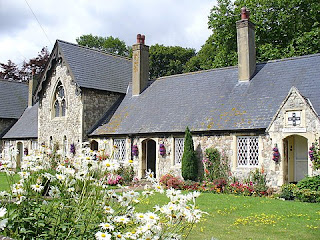She wore clothing befitting a princess, had a special metal container for heating bath water, and a collection of exotic animals provided by her father, King Edgar, and others. She also kept contact with her father that enabled her to use his influence in various ways. Goscelin of Canterbury wrote that her influence with her father was so profound that people from other countries and Rome would visit her, bringing her gifts for her growing zoo and asking for help with the king.
Christianity and politics were deeply entwined: kings were believed to rule by divine right, and Christian counsel was sought by rulers. Having a saint in the family was a good sign, so it makes sense that, 13 years after her death, her half-brother Æthelred pushed her canonization with the support of St. Dunstan.
Even King Cnut, who conquered half of England from Æthelred's son, Edmund II, supported her sainthood, perhaps as a way to ingratiate himself to the Wessex royalty, although marrying Æthelred's widow might have been sufficient. Cnut claimed that Edith appeared and saved him from a storm at sea.
Edith's "miracles" were mostly not of helping people with curing illness, but of appearances in visions, and often, shall we say, self-serving. Prior to canonization, she appeared to people urging them to support her elevation to sainthood. Afterward, when a Wilton nun tried to take one of her relics, a headband, Edith's head appeared to warn her off.
Of course, all of this comes from Goscelin of Canterbury, writing several decades after her death. We should take a closer look at him, next time.

















